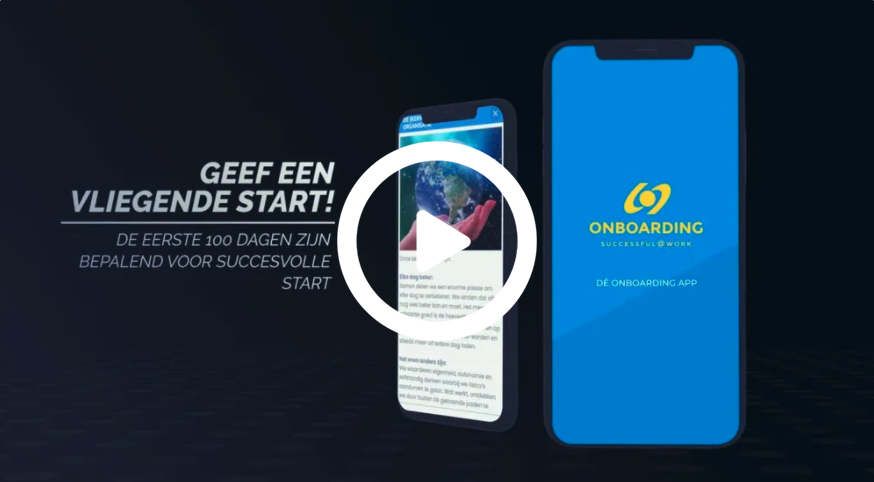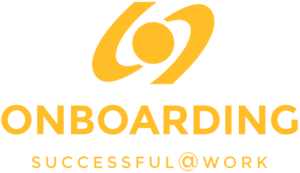A Gartner study shows that approximately 50% of people promoted within the company underperform after 1½ years.
A McKinsey study concludes that 27% to 46% of employees who change jobs perform underperforming after 2 years.
How can even employees who take a step within the organization fail in many cases?
They have the right knowledge and experience. Understand the organizational goals and fit well into the organizational culture.
If it doesn’t work for them, what about new employees?
An article from the Harvard Business Review by Rob Cross ea shows that these employees pay insufficient attention to building their (strategic) network. In this blog we translate their best practices into the Successful@Work onboarding program components!
“How to Succeed Quickly in a New Role” – 5 best practices
According to Rob Cross ea, many organizations still have old ideas about what constitutes a successful start in a new position. The basis for success for many organizations is: knowledge and experience and (new) employees tell them what to do and what result they should achieve.
However, their research shows that building a broad internal network is decisive for a successful transition to a new role or a new organization.
In their article “How to Succeed Quickly in a New Role” (Havard Business Review-December 2021), they describe the 5 best practices that determine a successful start:
- Quickly position yourself in a broad network by asking a lot of questions and discovering where innovative information and people come together across the organization (boundary tension).
- When entering into new contacts, connecting to enthusiasm, passion and creating energy.
- Looking at how you can add value, but also where there are gaps in your knowledge and experience and which contacts within the network can fill these gaps.
- Expand your network by adding other opinion leaders from outside or within the organization to your strategic network.
- Stimulate the exchange of ideas and enthusiasm within your network.
Many Transitions + Poor Onboarding = Big Problems
Tips for the Onboarding
Below we translate these 5 best practices into onboarding program components!
Parts that the new employee will work with during the onboarding journey.
Program part 1: Broad approach to networking
When getting acquainted during the onboarding, opt for a broad approach. The introduction therefore does not only cover your own team, but also the networks around it. And both formal and informal lines.
The pitfall is that the focus at the start is too much on the group of people that you work with directly. Your own team, the manager and maybe 2 other stakeholders are central. The rest of the contacts usually arise on an ad hoc basis. To be successful it is important to build a broader network.
Have the new employee actively contact peers – employees of the same level – from other teams. During the conversations, ask the new employee to investigate what they prioritize, are passionate about and what their pain points are.
By talking to these employees, the new employee automatically learns more about team/department transcending pain points, priorities and engagement. And he knows which activities and developments are taking place within the organization.
Moreover, the new employee can spar with these contacts. And ask for advice about, for example, “why certain solutions do not work in his team”. Or these contacts explain how the hares – decision-making – work.
In other words, let the new employee actively discover during onboarding where information and people come together. Right through the organization! And in this way build his network.
Program part 2: Take a step back
To start successfully, the new employee must take a step back… and see how he can help others.
The tip is to approach introductory meetings differently. Not as we are used to by talking about your knowledge and experience. And what you will bring and which tasks and goals the new employee wants to achieve. But by asking questions!
The new hire examines the pain points and priorities of colleagues, managers and peers. What are they passionate about? Where is their passion? And how can the new employee help to achieve this?
Have the new employee make a short interview report. For example, per component pain points, priorities, enthusiasm 3 bullets per conversation.
Program part 3: Add value
Collaboration has become increasingly important to be successful. Innovation takes place precisely at the interfaces of disciplines and knowledge.
Give the new employee the tip not to immediately come up with solutions, but above all to ask questions. Explore pain points, priorities, engagement and passion. What is the question behind the question. Only then apply knowledge and experience and do this together with your discussion partner!
Your solution is always a co-creation!
Take the reports from program part 2. And reflect on this. What do you want to work on. What are you passionate about. Make an analysis: who have similar topics and where can I help and add value. Bring these employees together and plan follow-up interviews.
The aim is to arrive at a successful approach in the follow-up discussions with several people from different organizational units.
Program part 4: Opinion leaders and other thinkers?
During the onboarding period, a new employee is introduced to opinion leaders within the organization. These opinion leaders have specific and unique talents that give the organization an edge. These talents are necessary to achieve the mission and to lead back to the identity of the organization.
It is important to ask at the end of the conversations with these opinion leaders: who else finds this interesting, who sponsors or supports these ideas, who is enthusiastic about it. Or who is completely different and has different priorities.
The meeting with the opinion leaders is an important first step. However, subsequently contacting the employees mentioned at the end of the conversation and establishing a connection with them ensures success. Cross ea even indicate that their research shows that this determines 90% of the success of a new employee .
Share this knowledge with your new employee during their onboarding journey!
Program part 5: Developing enthusiasm
Too often the new employee is only introduced to whom his supervisor thinks he should speak to. The pitfall of this is that the network is too limited and narrow to be really successful.
Actively encourage the new employee to build a broad network by means of the above assignments in the onboarding program! It is important that the employee also thinks about his own enthusiasm. And choose a subject that he is really passionate about.
The onboarding program brings this enthusiasm and the passion of others together in a natural way and stimulates the exchange of knowledge and ideas.
Look in the Successful@Work Onboarding App for even more examples of assignments that you give (including under the onboarding journey section).
Cross’ article or podcast can be found via the links below:
Article by Cross ea: https://hbr.org/2021/11/how-to-succeed-quickly-in-a-new-role
Podcast of Cross ea: https://hbr.org/podcast/2021/11/in-a-new-role-heres-how-to-hit-the-ground-running











